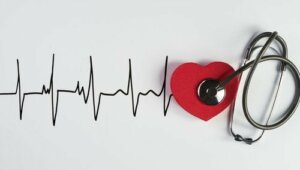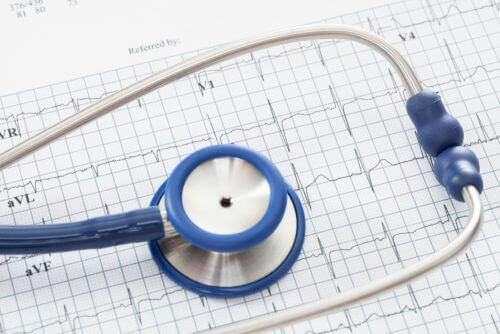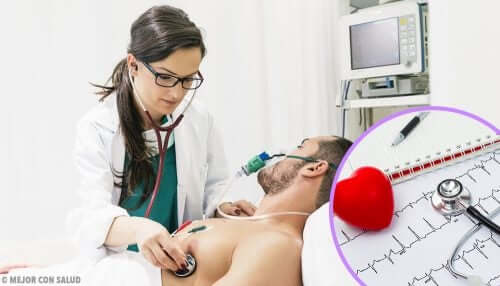Antiarrhythmics and their Appropriate Combinations

Antiarrhythmics are drugs used in the symptomatic and preventive treatment of heart function deterioration due to tachycardia and irregular rhythm.
They act by modifying the automatism, the refractory periods, and the conduction speed of the heart cells. However, the objectives of treatment with antiarrhythmics are to control symptoms and improve survival rates.
However, the efficacy of antiarrhythmics is moderate and they have a narrow therapeutic margin. In some cases, they can even be lethal if not used properly.
Types of antiarrhythmics

According to their main mechanism of action, we can classify antiarrhythmics as follows:
Class I antiarrhythmics
Antiarrhythmics from this group act by blocking the sodium channels. Among them, the most used are flecainide and propafenone.
They can become dangerous in patients with certain types of heart problems, especially if they have had a heart attack or suffered any depression of the heart’s contraction function.
At the same time, depending on their characteristics, this group has the following division:
- Class IA: Disopyramide and procainamide are in this class; they’re of intermediate kinetics. They prolong the duration of action potential, repolarization and PR, QRS and QT intervals.
- Class IB: Lidocaine and phenytoin. These drugs have a rapid kinetic and reduce or shorten the action potential. They can also shorten repolarization and QT interval.
- Class IC: Used with most frequency. They have a slow kinetic. They have little effect on action potential and repolarization. However, they prolong PR and QRS, and have no effect on QT.
Class II antiarrhythmic drugs
In this group, we have the beta-blockers. Atenolol, propranolol, metoprolol and bisoprolol are most often used.
Its bradycardizing effect stands out, that is, reducing the heart rate on the sinus and atrioventricular node. These drugs can be used in patients with or without structural cardiopathy.
Discover: 5 Home Remedies to Prevent Heart Disease
Class III antiarrhythmic drugs

This group acts by blocking the potassium channels. Amiodarone and sotalol are the most popular. Amiodarone is relatively safe in patients with structural heart disease.
Structural heart disease refers to a series of cardiovascular conditions that are different but related, since they’re all the result of a similar problem. For example, they can all be caused due to an interruption in the natural flow of blood through the internal chambers and valves of the heart.
On the other hand, as far as amiodarone is concerned, it has frequent and/or serious side effects at the extracardiac level. One example is that it can produce toxicity in the thyroid glands and in the lungs.
Class IV antiarrhythmic drugs
Class IV antiarrhythmics work by blocking calcium channels. Among them, the most used are verapamil and diltiazem.
Although they’re weak as antiarrhythmics, they show bradycardizing properties, and they act on the sinus and atrioventricular node. In addition, they can be dangerous in patients with depression of cardiac contractile function.
Also read: Foods and Medicines that You Should Never Mix Together
Other drugs
There are two other drugs that don’t belong to any of the above groups and that doctors also use to treat arrhythmias.
- Digoxin: Acts by shortening the atrial and ventricular refractory periods. It also has vagotonic properties, so it prolongs the conduction and refractory periods in the atrioventricular node.
- Adenosine: Slows or blocks conduction in the atrioventricular node. It can also reverse conduction-dependent tachycardias through the atrioventricular node.
Indications for antiarrhythmics

Doctors recommend taking antiarrhythmics to treat the following cases:
- Ending or controlling an arrhythmic episode
- Preventing the recurrence of an arrhythmia
- Avoiding serious arrhythmias from appearing in specific situations
In addition, physicians indicate them for certain documented tachycardias, according to their efficacy, safety, and proven benefit. In these situations, they’re used to relieve symptoms, improve heart performance, and prevent degeneration into a malignant arrhythmia.
When the patient suffers sustained supraventricular tachycardia, specialists use amiodarone, verapamil, digoxin, and adenosine. In contrast, if there’s a ventricular tachycardia, they use intravenous lidocaine. They administer it during myocardial ischemia, and they may also use intravenous amiodarone.
On the other hand, digoxin, beta-blockers, verapamil and amiodarone are administered to depress atrial-ventricular conduction. When extrasystoles need to be suppressed, doctors administer lidocaine. However, to prevent supraventricular and ventricular tachycardias, flecainide, amiodarone and beta-blockers are used.
Conclusion
Although specialists have been able to make great advances in cardiac ablation techniques, the type of arrhythmia and the patient’s profile conditions the treatment they select, especially if there’s underlying heart disease.
All cited sources were thoroughly reviewed by our team to ensure their quality, reliability, currency, and validity. The bibliography of this article was considered reliable and of academic or scientific accuracy.
-
Gaztañaga, L., Marchlinski, F. E., & Betensky, B. P. (2012). Mecanismos de las arritmias cardiacas. Revista Espanola de Cardiologia. https://doi.org/10.1016/j.recesp.2011.09.018
-
Matiz Camacho, H. (1991). Arritmias ventriculares. Guías de Práctica Clínica Basadas En La Evidencia. https://doi.org/10.1157/13101650
-
Lorentz, M. N., & Brandão, B. (2011). Arritmias Cardíacas y Anestesia. Revista Brasileña Anestesiologia.
This text is provided for informational purposes only and does not replace consultation with a professional. If in doubt, consult your specialist.








